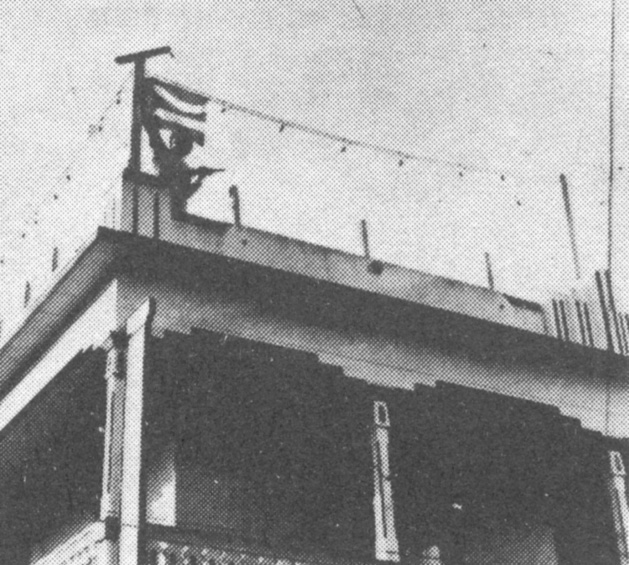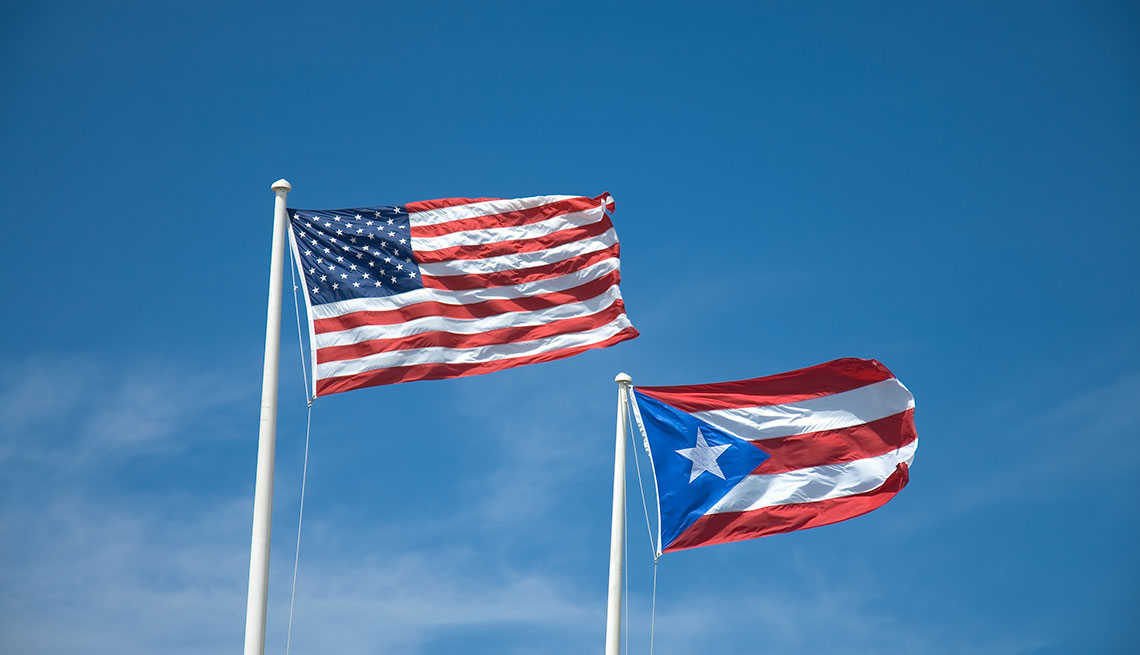Marta Rodríguez dijo, “Guaraní: palabra temida y anhelada, hoy el torbellino de tu encanto, me arrastra, me envuelve, por fin llegué a la edad tan esperada, no tenía conciencia de tanta espera, por fin soy ‘una mayor’ que puede hablarlo y disfrutarlo. ¿Será porque estaba prohibido? ¿Cómo será mi vida ahora que rozo tu dulzura? Ya no está la niña que se escondía para escucharlo. ¿Se perderá el misterio, el encanto, la seducción...?” (qtd. Gandulfo).
Paraguay es un país del que no hablamos mucho. Es uno de los dos países sudamericanos sin acceso directo al mar y, en segundo lugar, Bolivia. La capital de Paraguay es Asunción. Paraguay además tiene acceso a una de las maravillas del mundo que son las cataratas del Iguazú con Brasil y Argentina. El río Iguazú, que significa en guaraní “agua grande”, nace ahí entre los tres países y conduce hacía las cataratas (“Iguazú Argentina”).
Hay un lugar llamado Chaco en Paraguay. En 1932 existió una guerra entre Bolivia y Paraguay cuyo objetivo era apoderarse de este lugar (“Mapas históricos de América Latina”). La causa de este conflicto fue que Bolivia acababa de perder su salida al mar en la guerra con Chile y quería el acceso al mar a través del río Paraguay. El río Paraguay “posee 2.600 kilómetros de longitud de los cuales 1.017 kilómetros recorren territorio paraguayo” (Servín). Había pasado poco tiempo desde que habían encontrado petróleo en el área del Chaco hace poco. Al final de la guerra en 1935, Paraguay mantenía la mayor parte del Chaco y Bolivia había obtenido acceso al río Paraguay (“Mapas históricos de América Latina”). “En efecto, el 97% de la población reside en el sector oriental del país” (Rañales Pérez). Es decir que no hay mucha gente que vive en la región del Chaco, en su mayoría viven al este del río.
Los guaraní usualmente viven en Paraguay, pero también se encuentran en Brasil, Bolivia y Argentina. De acuerdo con su mitología, los guaraníes (y luego toda la humanidad) fueron creados por el dios Tupâ que creó el universo y Arasy, la madre de los cielos. Desde una mezcla de arcilla y otros recursos naturales crearon los primeros humanos, un hombre y una mujer, y les dejaron en el sol para secarse (“Mitos de creación”). No sabemos mucho sobre qué pasó antes de la llegada de los conquistadores españoles debido a que los guaraní eran pueblos ágrafos. Pasaron toda su historia y creencias de boca en boca. Se ha descubierto que los guaraní eran grupos seminómadas (Rojas Brítez).
El idioma guaraní era completamente oral hasta la llegada de los españoles. Los españoles deseaban poder entender mejor el idioma y desde ahí crearon un sistema de escritura parecido al español. La principal diferencia entre la escritura guaraní y el español es que las vocales guaraníes tienen dos sonidos, uno que es similar al español y el otro que tiene más nasalidad. También la gramática guaraní es un poco más sencilla que el español porque de las ocho categorías léxicas en el español, solo hay siete en el guaraní. No usan los artículos cuando hablan, así que es más simple (“Clase de guaraní”). Tal vez reconocería unas palabras que vienen del guaraní: tucán, tiburón, jaguar, petunia, piraña y maraca (“Palabras de origen quechua y guaraní”).
Mientras que mucha gente reconoce el nombre guaraní, el nombre autodesignado del idioma es avañe’ẽ que es compuesta de “ava” o persona y “ñe’ẽ” o lengua (“Avañe’ẽ”). De acuerdo con David Galeano Olivera, “Una de las consideraciones más resaltantes a la hora de hablar de la cultura guaraní es que pensamos que se trata exclusivamente de una ‘cultura oral’. Originalmente fue una cultura oral pero a partir de la colonización eso cambió y en la actualidad el avañe’ẽ—como cualquier otra lengua moderna—pasó a ser una lengua escrita. Hoy existe una profusa literatura en guaraní, bilingüe o acerca del guaraní, no solamente en los libros, sino también en el mundo virtual donde conviven decenas de artículos y libros alojados en distintos sitios” (“De la cultura oral a la escrita”).
Entonces, ¿qué cambió? A partir de la llegada de los conquistadores en 1524, al área que la nombraron “provincia gigante de las indias”, empezó la conquista a indígenas por parte de los españoles (“Breve reseña histórica de Paraguay”). En 1537 fue fundada la ciudad de Asunción, llamada el Fuerte de Nuestra Señora de la Asunción. Algunos autores de esta época dicen, “El fenómeno de la llegada de los españoles... está marcado por profundos desencuentros culturales. Por una parte, estaba bien firme el etnocentrismo europeo con su cultura, lengua y religión; y por otra, las poblaciones indígenas... con sus respectivas lenguas, tradiciones y creencias. El choque de culturas fue traumático, especialmente para los Pueblos Indígenas” (Rojas Brítez).
A partir de la ocupación del territorio por europeos empezaron la obra de convertir la población al cristianismo, tomar ventaja de los indígenas y forzarlos a hacer obra manual aún hasta esclavizarlos. Dice un artículo que “el colonialismo europeo, tanto portugués como español, explotó la mano de obra guaraní, causando muerte y destrucción cultural” (“Guaraníes. Cultura guaraní”). Es interesante ver que en la “Breve reseña histórica del Paraguay”, que tiene la marca oficial del gobierno de Paraguay, evita hablar de las injusticias que les enfrentaban los guaraní a la mano de los conquistadores. Simplemente dice, “en la fundación de fuertes y pueblos e iniciaron, en alianza con las comunidades indígenas, un proceso de conformación social marcado por la fuerza de los conquistadores y la acción evangelizadora de la Iglesia Católica”. Nunca menciona la obra forzada de los indígenas.
La explotación del indígena no terminó en 1870 cuando se abolió la esclavitud en Paraguay, solamente cambió su cara (ABC.com). Entre 1954 hasta 1989 Alfredo Stroessner era el dictador de Paraguay e instaló la prohibición del hablar guaraní en lugares públicos o enseñarlo en la escuela (Huenchumil, Fernández Parga). Dice Acceso que, “era muy común también que los padres no quisieran que sus hijos hablaran guaraní en casa, aunque fuera su lengua materna (la de los padres). Sin embargo, los niños usaban la lengua entre ellos a escondidas, como un juego, sin saber que estaban ayudando a evitar que desapareciera” (Fernández Parga).
Hoy en día, cuentan los pueblos indígenas basados en la familia lingüística a la que pertenecen. En la familia guaraní, hay seis grupos de pueblos guaraní en Paraguay (“Población originaria e indígena del Paraguay”). Muchas personas han notado la fuerza del idioma guaraní en la actualidad. La tecnología ha contribuido mucho a la fuerza de mantener el guaraní como idioma vivo y sin riesgo de extinción. Dice en el sitio Ciencias del Sur, “De las más de seis mil lenguas registradas por la Organización de las Naciones Unidas para la Educación, la Ciencia y la Cultura (UNESCO): unas 200 ya se extinguieron; casi la mitad de ellas se encuentran en peligro de extinción o en situación crítica o vulnerable, pero para nuestra tranquilidad y orgullo, el guaraní se encuentra hoy entre las lenguas vigorosas pese a provenir de un pasado negro... De esos miles de idiomas, solamente cerca de trescientas tienen su propia versión de Wikipedia y una de ellas es el guaraní; así como también de toda esa cifra, solamente unas ciento cuarenta tienen su propia versión del navegador Mozilla Firefox y una de ellas es la nuestra. Asimismo, numerosas universidades del mundo (París, Mainz, São Paulo, Buenos Aires) hoy promueven y difunden la enseñanza del guaraní como una lengua de mucho prestigio” (Galeano Olivera).
Anotamos que 90% de la población paraguaya habla el guaraní y esta lengua tiene estatus de idioma cooficial junto con el castellano en Paraguay. Desde el ingreso de los europeos, empezó el mestizaje de culturas e idiomas. Sabemos que la mezcla de español e inglés se llama espanglés o spanglish, y también hay una palabra para la mezcla del guaraní y español; se llama “jobara”. Aún con la fusión de los idiomas en su sociedad, hay muchos pasos más para tomar para incluir a la gente indígena. Los guaraní no son los únicos grupos indígenas enfrentándose con problemas de visibilidad y discriminación en su país. Hay 20 etnias autóctonas que viven en Paraguay y el 75% de los indígenas vive en situación de pobreza extrema (Carneri).
Para los paraguayos es un orgullo su herencia guaraní pero solamente hasta cierto punto. Todavía es algo vergonzoso ser “indio”. Ya que esta palabra se utiliza como un insulto, parecido al término “neandertal” o hablar de alguien incivilizado. Las etnias indígenas que no son guaraní reciben aún más de este racismo. De acuerdo con el estado cooficial del guaraní en 2019, los documentos oficiales del estado todavía no están en guaraní, aunque ambas lenguas son cooficiales en el país. Algunos decretos y formularios empiezan a estar escritos en los dos idiomas, pero de momento el proceso está siendo lento (Fernández Parga). Eso sí raramente puede ser el caso, si va al sitio web del gobierno de Paraguay, la mayoría está en español. Allí encontrará un enlace de traducir entre el español y el guaraní o viceversa, pero los documentos, cédulas, preguntas frecuentes y toda la demás información sólo se encuentra en español (Portal Paraguay).
En este mismo artículo por Ruth Fernández Parga dice que, “muchos hablantes ven el guaraní como una lengua hablada y para contextos más informales” porque todavía falta que exista una carrera universitaria sobre el guaraní. Sin embargo, parece que esta información podría ser anticuada porque Daniel Galeano Olivera ha dicho que, “Según los datos del Ateneo de Lengua y Cultura Guaraní, actualmente existen 23 universidades—de 11 países y tres continentes—que imparten cursos, clases o tienen tesis y líneas de investigación sobre el guaraní” (“El guaraní o avañe’ẽ, una lengua vigente en 12 países”). Estos países incluyen—además de Argentina, Brasil, Bolivia, Uruguay y Paraguay—los Estados Unidos, Francia, Suiza, Alemania, España, Japón e Italia (Galeano Olivera). Esto nos demuestra que mientras que el guaraní está creciendo a pasos agigantados, el gobierno paraguayo aún falta crear un sistema más inclusivo.
El punto de esta información es que los guaraní han sobrevivido por mucho tiempo con su cultura e idioma. Siguen luchando por los derechos que merecen. Hay estigmas por ser indígena y por no poder hablar el español (Carneri). Esta discriminación sigue y es parte de las prácticas de nuestra sociedad (Grosfoguel). Marta Rodríguez es maestra en la escuela rural de Corrientes, Argentina y ella cuenta que, “...los chicos que aún sabiendo el guaraní, niegan saberlo. Y a eso se me ha ocurrido llamarle: ‘las cicatrices de la represión al idioma guaraní’ Yo fui una maestra represora del guaraní. Tengo en el primer grado a los hijos de mis alumnos de 7mo, a los que yo les prohibía hablar en guaraní. Y hoy, no quieren hablar en mi grado, y me dicen ‘señora mi papá no quiere que hable guaraní, porque si no me voy a quedar así’. Y así significa para ellos, sin saber leer y escribir...” (qtd. Gandulfo). Así quedó una consecuencia de la dictadura de Stroessner aún hasta el presente. Los guaraníes sienten vergüenza de hablar su idioma por las críticas de la sociedad.
Los guaraní en Paraguay y también muchos grupos originarios de las Américas han sufrido así. Están escondidos los problemas de ellos por ser parte de la minoría. Con el caso del guaraní sabemos que no corre el riesgo de extinción, pero no es el caso de muchos otros idiomas y culturas autóctonas, como dijo David Galeano Olivera. Estas culturas también son importantes, e incluso las que no son conocidas por todo el mundo.
“Guaraní: palabra temida y anhelada, hoy el torbellino de tu encanto, me arrastra, me envuelve, por fin llegué a la edad tan esperada, no tenía conciencia de tanta espera, por fin soy ‘una mayor’ que puede hablarlo y disfrutarlo. ¿Será porque estaba prohibido? ¿Cómo será mi vida ahora que rozo tu dulzura? Ya no está la niña que se escondía para escucharlo. ¿Se perderá el misterio, el encanto, la seducción...?” (Rodríguez qtd. Gandulfo).




